Train Arthur Cheney

Robert Williams Wood (May 2, 1868 – August 11, 1955) was a physicist and inventor. He is often cited as being a pivotal contributor to the field of optics and is best known for giving birth to the so-called "black-light effect". Wood's patents and theoretical work shed much light on the nature and physics of ultra-violet radiation and made possible the myriad of uses of uv-fluorescence which became popular after World War I. Born in Concord, Massachusetts, Wood attended The Roxbury Latin School with the initial intent of becoming a priest. But he decided to study optics instead when he witnessed a rare glowing aurora one night and believed the effect to be caused by "invisible rays". In his pursuit to find these "invisible rays", Wood studied and earned numerous degrees from Harvard, MIT and the University of Chicago. He taught briefly at the University of Wisconsin and eventually became a full-time professor of "optical physics" at Johns Hopkins University from 1901 until his death. His wrote many articles on spectroscopy, phosphorescence and diffraction. But it's his work in ultra-violet light that his is most well known for. He discovered that the darkest area of the Moon in ultraviolet light is the Aristarchus Plateau. In 1909, Wood constructed the first practical liquid mirror astronomical telescope, by spinning mercury to form a paraboloidal shape, and investigated its benefits and limitations.[1] Wood has been described as the "father of both infrared and ultraviolet photography". Though the discovery of electromagnetic radiation beyond the visible spectrum and the development of photographic emulsions capable of recording them pre-date Wood, he was the first intentionally to produce photographs with both infrared and ultraviolet radiation.[2] He developed a filter, Wood's glass, that was opaque to visible light but transparent to ultraviolet and is used in modern-day blacklites. He used it for ultraviolet photography but also suggested its use for secret communication.[3] He was also the first person to photograph ultraviolet fluorescence.[2][3] He also developed a lamp, Wood's lamp, that radiated only ultraviolet. The slightly surreal glowing appearance of foliage in infrared photographs is called the Wood effect.[4] Wood also authored non-technical works. In 1915, Wood co-authored a science fiction novel, The Man Who Rocked the Earth, with Arthur Train[5]; a sequel, The Moon Maker, was published the next year[6]. He also wrote and illustrated two books of children's verse, How to Tell the Birds from the Flowers (1907) and Animal Analogues (1908). Wood died in Amityville, New York.[7] Henry Augustus Rowland (1899) · Albert Abraham Michelson (1901) · Arthur Gordon Webster (1903) · C. Barus (1905) · E. Nichols (1907) · H. Crew (1909) · W. Magie (1911) · B. Peirce (1913) · E. Merritt (1914) · Robert Andrews Millikan (1916) · H. Bumstead (1918) · J. Ames (1919) · Theodore Lyman (1921) · Thomas Corwin Mendenhall (1923) · Dayton Miller (1925) Karl Taylor Compton (1927) · H. Gale (1929) · William Francis Gray Swann (1931) · P. Foote (1933) · Arthur Compton (1934) · Robert W. Wood (1935) · F. Richtmyer (1936) · H. Randall (1937) · L. Briggs (1938) · J. Tate (1939) · John Zeleny (1940) · George Braxton Pegram (1941) · G. Stewart (1941) · Percy Williams Bridgman (1942) · A. Hull (1943) · Arthur Jeffrey Dempster (1944) · Harvey Fletcher (1945) · Edward Condon (1946) · Lee Alvin DuBridge (1947) · J. Robert Oppenheimer (1948) · Francis Wheeler Loomis (1949) · Isidor Isaac Rabi (1950) Charles Christian Lauritsen (1951) · John Hasbrouck Van Vleck (1952) · Enrico Fermi (1953) · H. Bethe (1954) · Raymond Thayer Birge (1955) · E. Wigner (1956) · Henry DeWolf Smyth (1957) · J. Beams (1958) · George Eugene Uhlenbeck (1959) · V. Weisskopf (1960) · Frederick Seitz (1961) · William Vermillion Houston (1962) · J. Williams (1963) · R. Bacher (1964) · Felix Bloch (1965) · John Archibald Wheeler (1966) · Charles Hard Townes (1967) · James M. Bardeen (1968) · Luis Walter Alvarez (1969) · Edward Mills Purcell (1970) · R. Serber (1971) · Philip M. Morse (1972) · J. Mayer (1973) · Wolfgang K. H. Panofsky (1974) · Chien-Shiung Wu (1975) W. Fowler (1976) · George Pake (1977) · N. Ramsey (1978) · Lewis M. Branscomb (1979) · Herman Feshbach (1980) · Arthur Leonard Schawlow (1981) · Maurice Goldhaber (1982) · Robert Marshak (1983) · Mildred Dresselhaus (1984) · Robert R. Wilson (1985) · Sidney Drell (1986) · Val Logsdon Fitch (1987) · J. Krumhansl (1989) · Eugen Merzbacher (1990) · Nicolaas Bloembergen (1991) · E. Henley (1992) · Donald N. Langenberg (1993) · B. Richter (1994) · C. Patel (1995) · J. Schrieffer (1996) · D. Bromley (1997) · A. Sessler (1998) · J. Friedman (1999) · J. Langer (2000) G. Trilling (2001) · W. Brinkman (2002) · M. Sarachik (2003) · H. Quinn (2004) · M. Cohen (2005) · J. Hopfield (2006) · L. Kadanoff (2007) · A. Bienenstock (2008) · C. Murray (2009)
do you like this author?
What readers are saying
What do you think? Write your own comment on this book!
write a commentWhat readers are saying
What do you think? Write your own comment on this author!
write a commentBook list

The Confessions of Artemas Quibble
Being the Ingenuous and Unvarnished History of Artemas Quibble,Esquire,One-Time Practitioner in the New York Criminal Courts,Together with an Account of the Divers Wiles,Tricks,Sophistries,Technicalities,and Sundry Artif
Series:
Unknown
Year:
Unknown
Raiting:
4/5
Show more
add to favoritesadd In favorites

The "Goldfish"
Being the Confessions af a Successful Man
Series:
Unknown
Year:
Unknown
Raiting:
2.5/5
Show more
add to favoritesadd In favorites

the world and thomas kelly
Series:
Unknown
Year:
Unknown
Raiting:
0.5/5
Purchase of this book includes free trial access to www.million-books.com where you can read more than a million books for free. This is an OCR edition with typos. Excerpt from book: Ill Tom's earliest recollections were of lying in his mother's arms and seeing the crescent moon across the housetops. But he did not remember his mother ever singing to him. Mrs. Kelly, poor lady, never sang anythingexcept hymns in a thin quaver. She took life far too seriously for that. To her Tom was a responsibility that left no vitality for playfulness or even the purr of mere comfort. She had been thirty when she married, she was forty- three when Tom was born, and she was now nearly fifty. Her girlhood had been a drab affair of a shabby genteel sort from which active sports had been excluded as vulgar. Any natural mirth she might have had as a child had long since succumbed to the apprehensions of her New England conscience. She did not really believe in a personal devil with a red tail, but she pretended to Tom that she did and felt herself in danger of hell fire because she did not. Dear, well-meaning lady! And though she loved Tom with a passionate devotion was he not all she had on earth ?yet the restraint of her Puritan upbringing and the belief that life was so serious a matter deprived her of the ability to give any natural expression to her feelings and forced her to mask her real affection under a demeanor of self-conscious severity. By day he lay in her lap in the same place, and instead of the moon, watched the little globules of light, reflected from the water standing on the tin roof of the bay window, dance on the ceiling. They danced and danced so jollily that he did not miss his mother's singing, and he would laugh with delight, and then his glance would stray to where a steel-engraved Madonna with great soulful eyes gazed down upon another baby, just like him, who lay in her armsand beyond to where the red worsted motto urged him to "Look unto me ...
Show more
add to favoritesadd In favorites
Book list

The Confessions of Artemas Quibble
Being the Ingenuous and Unvarnished History of Artemas Quibble,Esquire,One-Time Practitioner in the New York Criminal Courts,Together with an Account of the Divers Wiles,Tricks,Sophistries,Technicalities,and Sundry Artif
Series:
Unknown
Year:
Unknown
Raiting:
4/5
Show more
add to favoritesadd In favorites

The "Goldfish"
Being the Confessions af a Successful Man
Series:
Unknown
Year:
Unknown
Raiting:
2.5/5
Show more
add to favoritesadd In favorites

the world and thomas kelly
Series:
Unknown
Year:
Unknown
Raiting:
0.5/5
Purchase of this book includes free trial access to www.million-books.com where you can read more than a million books for free. This is an OCR edition with typos. Excerpt from book: Ill Tom's earliest recollections were of lying in his mother's arms and seeing the crescent moon across the housetops. But he did not remember his mother ever singing to him. Mrs. Kelly, poor lady, never sang anythingexcept hymns in a thin quaver. She took life far too seriously for that. To her Tom was a responsibility that left no vitality for playfulness or even the purr of mere comfort. She had been thirty when she married, she was forty- three when Tom was born, and she was now nearly fifty. Her girlhood had been a drab affair of a shabby genteel sort from which active sports had been excluded as vulgar. Any natural mirth she might have had as a child had long since succumbed to the apprehensions of her New England conscience. She did not really believe in a personal devil with a red tail, but she pretended to Tom that she did and felt herself in danger of hell fire because she did not. Dear, well-meaning lady! And though she loved Tom with a passionate devotion was he not all she had on earth ?yet the restraint of her Puritan upbringing and the belief that life was so serious a matter deprived her of the ability to give any natural expression to her feelings and forced her to mask her real affection under a demeanor of self-conscious severity. By day he lay in her lap in the same place, and instead of the moon, watched the little globules of light, reflected from the water standing on the tin roof of the bay window, dance on the ceiling. They danced and danced so jollily that he did not miss his mother's singing, and he would laugh with delight, and then his glance would stray to where a steel-engraved Madonna with great soulful eyes gazed down upon another baby, just like him, who lay in her armsand beyond to where the red worsted motto urged him to "Look unto me ...
Show more
add to favoritesadd In favorites
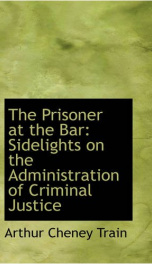
the prisoner at the bar sidelights on the administration of criminal justice
Series:
Unknown
Year:
Unknown
Raiting:
4.5/5
PREFACE. THE prisoner at the bar is a figure little known to most of us. The newspapers keep us steadily informed as to the doings of all sorts of criminals up to the time of their capture, and prison literature is abundant, but just how tlie crirninal becomes a convict is not a matter of common knowledge. This, however, does not prevent the ordinary citizen from expressing pronounced and, frequently, vociferous opinions upon our methods of administering criminal justice, in the same way that he stands ready at any time to criticise the Darwinian theory, free trade or foreign missions. Full knowledge of any subject is inevitably an impediment to forcible asseveration. Generalities are easy to formulate and difficult to disprove. The man who sits with his feet up and his chair tilted back in the drummer S hotel will in orm you that there is no such thing as criminal justice and that the whole judiciary, state and federal, is owned or can be bought you yourself doubtless believe that the jury system is a failure and successfully evade service upon it while your neighbor is firmIy con vinced that prosecutors secure their positions by reason of their similarity to bloodhounds and re tain them by virtue of the same token. The only information available to most people on this exceedingly important subject is that offered by the press, and the press save in the case of sensational murder trials usually confines itself to dramatic accounts of the arrest of the more picturesque sort of criminals, with lurid descriptions of their offences. The report or story concludes with the statement that Detective-Sergeant Smith immediately arraigned his prisoner Robinson before Magistrate Jones, who committed the latter to jail and adjourned the hearing until the following Tuesday. This ends the matter, and the grewsome or ingenious details of the crime having been served up to satisfy the public appetite, and the offender having been locked up, there is nothing, from the reporters point of view, any longer in the story. We never hear of Robinson again unless he happens to be the president of a bank or a degenerate millionaire. He is disposed of, as they say in the criminal reports, without exciting anybodys interest, and his conviction or acquittal is not attended by newspaper comment. If on the other hand the case be one of sensational interest we are treated daily to long histories of the defendant and his family, illustrated by grotesque reproductions from the ancestral photograph album. We become familiar with what he eats and drinks, the number of cigars he smokes and his favorite actor and author. Tbe case consumes months in preparation and its trial occupies weeks. A battalion of special talesmen marches to the court house,- the standing army of the gibbet, as one of my professional brethren on the other side of the bar calls them. As each of the twelve is chosen his physiognomy appears on the front page of an evening edition, a tear dropping from his eye or his jaws locked in grim determination, in accordance with the sentiments of the editor or the policy of the owner. Then follows a pictorial procession of witnesses. The prosecutor makes a full-page address to the public in the centre of which appears his portrait, heroic size, arm sawing the air. I am innocent cries a purple defendant, in green letters. Murderer hisses a magenta prosecutor, in d. characters of vermilion. Finally the whole performance comes to an end without anybody having much of an idea of what has actually taken place, and leaving on the public mind an entirely false and distorted conception of what a criminal trial is like... --This text refers to an alternate Paperback edition.
Show more
add to favoritesadd In favorites
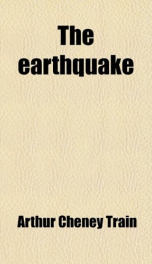
the earthquake
Series:
Unknown
Year:
Unknown
Raiting:
4.5/5
Purchase of this book includes free trial access to www.million-books.com where you can read more than a million books for free. This is an OCR edition with typos. Excerpt from book: m MY FRIENDS "The End of worldly life awaits us all: Let him who may, gain honor ere death." We were just getting up from breakfast the Monday morning after our return to New York when the doorbell rang and our old friend Kenneth Adams came in, pale and agitated. "What's the matter, Ken?" asked Helen. "Did your cook spoil the coffee?" "No," he replied nervously. "We haven't any cook but that's not my trouble. Lucy's got appendicitis at least that is what young Hopkins says, and I haven't any reason to doubt his word. He says she ought to be operated on immediately." "What a shame!" said Helen. "Still, she'll be ever so much better without it. Of course the operation isn't pleasant, but once her appendix is out " "Yes, but who's going to take it out?" demanded Kenneth. "What's the matter with McCook?" I inquired, with callous levity. "He's supposed to be our best local excavator, isn't he?" "McCook? He's been in Paris for two years and a half!" "Oh, yes, I remember," I admitted. "So he has. How about Furness?he's one of the 'Big Four.' " "Furness sailed with the Fordyce Unit last spring. He's on the firing-line." "Well, Jameson then. One is about as good as another." "Jameson's gone, too." "Farley?" "Farley's down in Washingtonhe's a major, I believehelping on some advisory medical board." "By George!" I ejaculated with more sympathy. "Some medical exoduswhatf" "I'm at my wits' end!" declared Adams. "All the big operators have gone away. I've called up hospital after hospital, doctor's office after doctor's office, and they all tell me the same thingDr. So-and- So has been away since June or July in 1914or whatever the fact is." "But what's the matter with Freylingheusen?" I queried. "I saw him at the theatre the other ...
Show more
add to favoritesadd In favorites

the butlers story being the reflections observations and experiences of mr p
Series:
Unknown
Year:
Unknown
Raiting:
4/5
Show more
add to favoritesadd In favorites
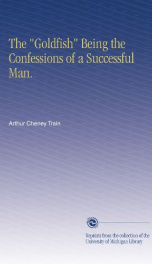
the goldfish being the confessions of a successful man
Series:
Unknown
Year:
Unknown
Raiting:
1/5
This volume is produced from digital images created through the University of Michigan University Library's preservation reformatting program. The Library seeks to preserve the intellectual content of items in a manner that facilitates and promotes a variety of uses. The digital reformatting process results in an electronic version of the text that can both be accessed online and used to create new print copies. This book and thousands of others can be found in the digital collections of the University of Michigan Library. The University Library also understands and values the utility of print, and makes reprints available through its Scholarly Publishing Office.
Show more
add to favoritesadd In favorites

mcallister and his double
Series:
Unknown
Year:
Unknown
Raiting:
1/5
McAllister's ChristmasïCALLTSTER was out of sorts. All theJLV-l afternoon he had sat in the club window and watched the Christmas shoppers hurrying by with their bundles. He thanked God he had no brats to buy moo-cows and bow-wows for. The very nonchalance of these victims of a fate that had given them families irritated him. McAllister was a clubman, pure and simple; that is to say though neither simple nor pure, he was a clubman and nothing more. He had occupied the same seat by the same window during the greater part of his earthly existence, and they were the same seat and window that his father had filled before him. His select and exclusive circle called him 11 Chubby," and his five-and-forty years of terrapin and cocktails had given him a graceful rotundity of person that did not belie the name. They had also endowed him with a cheerful though somewhat florid countenance, and a permanent sense of well-being.Table of Contents CONTENTS; pagk; McAllister's Christmas 1; The Bakon de Ville 53; The Escape of Wilkins 77; The Governor-General's Trunk 113; The Golden Touch 141; McAllister's Data of Ethics 177; McAllister's Marriage 205; The Jailbird 233; In the Course of Justice 255; The Maximilian Diamond 283; Extradition 311About the Publisher Forgotten Books is a publisher of historical writings, such as: Philosophy, Classics, Science, Religion, History, Folklore and Mythology.Forgotten Books' Classic Reprint Series utilizes the latest technology to regenerate facsimiles of historically important writings. Careful attention has been made to accurately preserve the original format of each page whilst digitally enhancing the difficult to read text. Read books online for free at www.forgottenbooks.org
Show more
add to favoritesadd In favorites

courts criminals and the camorra
Series:
Unknown
Year:
Unknown
Raiting:
4.5/5
Originally published in 1912. This volume from the Cornell University Library's print collections was scanned on an APT BookScan and converted to JPG 2000 format by Kirtas Technologies. All titles scanned cover to cover and pages may include marks notations and other marginalia present in the original volume.
Show more
add to favoritesadd In favorites
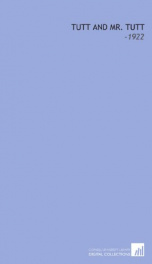
Tutt and Mr. Tutt
Series:
Unknown
Year:
Unknown
Raiting:
4.5/5
Ephraim Tutt, a tenacious Vermont lawyer, appears in many novels of an American thriller writer Arthur Cheney Train. “Tutt and Mr. Tutt” is one of those books, being a story of the courts and trials of New York City of the early 1920s. Humorous and sometimes full of fundamental talk on the law and humanity, it tells about the elderly Mr Tutt and his junior partner Tutt, spending their time in search of the truth to defend the innocent.
Show more
add to favoritesadd In favorites
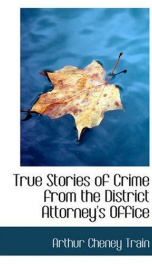
True Stories of Crime From the District Attorney's Office
Series:
Unknown
Year:
Unknown
Raiting:
2.5/5
Arthur Cheney Train was an American lawyer and legal thriller writer. At first Train worked as an assistant in the office of the New York District Attorney and in 1904 he started his literary career with the publication of the short story. He spent the next decade balancing between two careers. In 1919, he created the popular character of Mr. Ephraim Tutt, an old lawyer who supported the common man and always had a trick up his sleeve to right the law's injustices.
Show more
add to favoritesadd In favorites
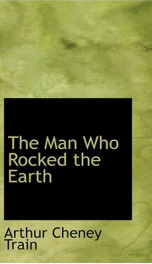
The Man Who Rocked the Earth
Series:
Unknown
Year:
Unknown
Raiting:
4/5
The inventive genius of mankind stimulated by the exigencies of war had produced a multitude of death-dealing mechanisms most of which had in turn been rendered ineffective by some counter invention of another nation.
Show more
add to favoritesadd In favorites
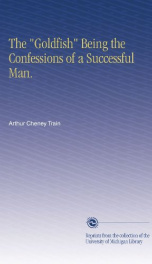
The "Goldfish"
Series:
Unknown
Year:
Unknown
Raiting:
1.5/5
This volume is produced from digital images created through the University of Michigan University Library's preservation reformatting program. The Library seeks to preserve the intellectual content of items in a manner that facilitates and promotes a variety of uses. The digital reformatting process results in an electronic version of the text that can both be accessed online and used to create new print copies. This book and thousands of others can be found in the digital collections of the University of Michigan Library. The University Library also understands and values the utility of print, and makes reprints available through its Scholarly Publishing Office.
Show more
add to favoritesadd In favorites
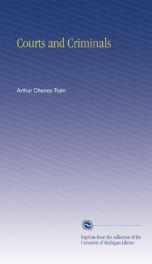
Courts and Criminals
Series:
Unknown
Year:
Unknown
Raiting:
2.5/5
This volume is produced from digital images created through the University of Michigan University Library's preservation reformatting program. The Library seeks to preserve the intellectual content of items in a manner that facilitates and promotes a variety of uses. The digital reformatting process results in an electronic version of the text that can both be accessed online and used to create new print copies. This book and thousands of others can be found in the digital collections of the University of Michigan Library. The University Library also understands and values the utility of print, and makes reprints available through its Scholarly Publishing Office.
Show more
add to favoritesadd In favorites
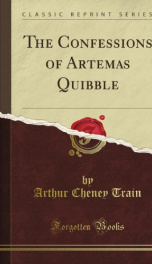
The Confessions of Artemas Quibble
Series:
Unknown
Year:
Unknown
Raiting:
3/5
This is a great novel composed in the form of a collection of stories connected with law made up on the basis of real cases. The main character of The Confessions of Artemas Quibble is a young man without moral principles and with vague future prospects. By chance he starts working as a lawyer and becomes extremely successful in this field. However, not everything is so plain and soon the mysteries will be revealed. The plot is very expressive and definitely makes a good impression on readers. Besides, it is full of funny moments which makes the novel more interesting and enjoyable.
Show more
add to favoritesadd In favorites
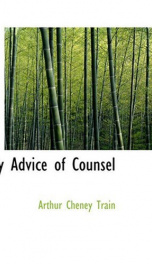
By Advice of Counsel
Series:
Unknown
Year:
Unknown
Raiting:
2/5
Being Adventures of the Celebrated Firm of Tutt & Tutt Attorneys & Counsellors at Law. The book combines seven short stories revolving around a father-and-son law firm. By an American lawyer and legal thriller writer, particularly known for his novels of courtroom intrigue and the creation of the fictional lawyer Mr. Ephraim Tutt.
Show more
add to favoritesadd In favorites
What readers are saying
What do you think? Write your own comment on this author!
write a commentif you like Train Arthur Cheney try:
readers also enjoyed
What readers are saying
What do you think? Write your own comment on this author!
write a commentGenre
if you like Train Arthur Cheney try:
readers also enjoyed
Do you want to exchange books? It’s EASY!
Get registered and find other users who want to give their favourite books to good hands!

